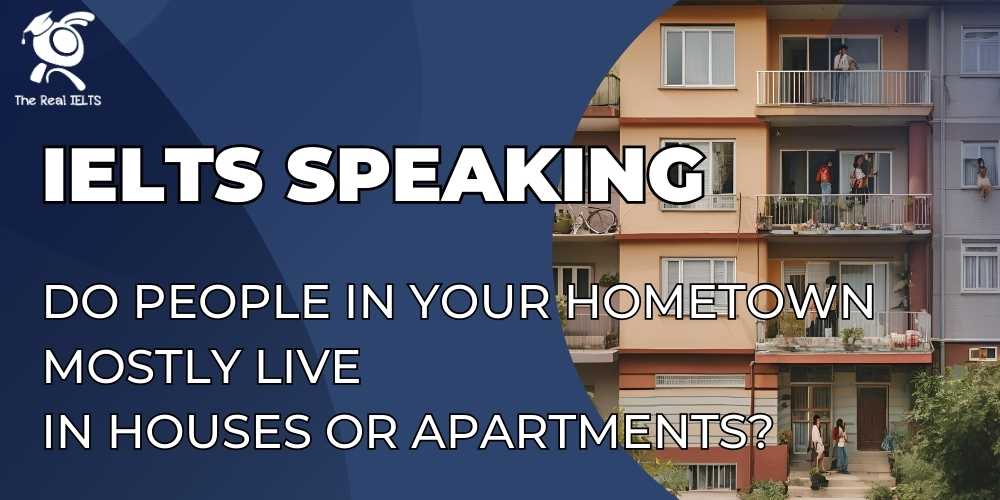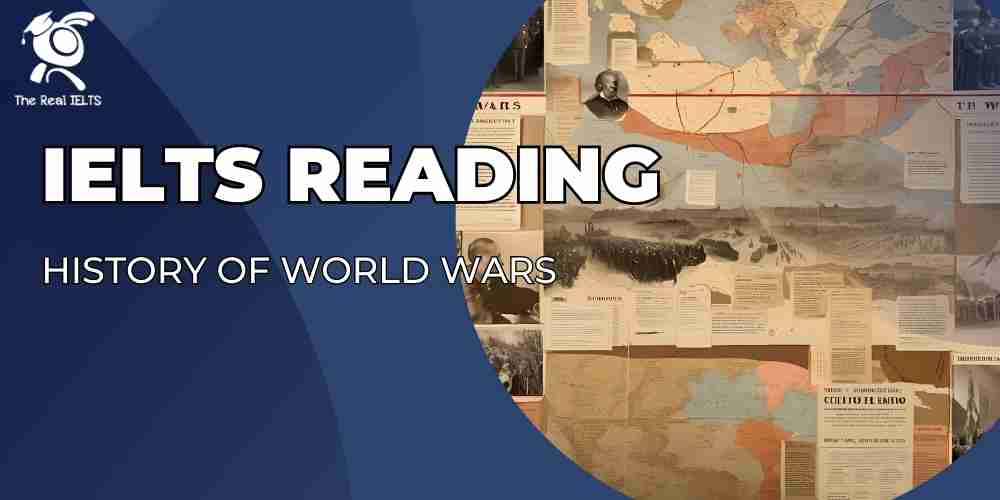IELTS Speaking: Do people in your hometown mostly live in houses or apartments? – Bài viết cung cấp từ vựng và cấu trúc để trả lời câu hỏi về loại hình nhà ở phổ biến ở quê hương. Bạn sẽ học cách mô tả, so sánh, và chia sẻ quan điểm cá nhân một cách rõ ràng và thuyết phục.
Đọc thêm các bài luyện thi IELTS khác.
Đọc thêm câu hỏi khác tại: IELTS Speaking Part 1: Introduction and Interview chủ đề Your hometown.
Đọc thêm IELTS Speaking: What’s the population of your hometown?
Câu trả lời IELTS Speaking: Do people in your hometown mostly live in houses or apartments?
Ví dụ 1
Introduction:
My hometown is Da Nang, a vibrant coastal city located in central Vietnam. It holds a special place in my heart because it’s where I grew up and where my family has lived for generations. Da Nang is known for its stunning beaches, modern infrastructure, and rich cultural heritage, making it a unique blend of tradition and progress.
Geographical Description:
Da Nang is blessed with a diverse physical landscape. It’s situated along the South China Sea, offering breathtaking coastlines like My Khe Beach. The city is also surrounded by lush mountains, such as the famous Marble Mountains, and is crossed by the Han River, which adds to its scenic beauty. This combination of sea, mountains, and rivers makes Da Nang a visually stunning place to live.
Cultural Aspects:
The city is a melting pot of cultures and traditions. While it’s modernizing rapidly, it still retains its Vietnamese roots. Festivals like the Da Nang International Fireworks Festival and traditional events like Tet (Lunar New Year) are celebrated with great enthusiasm. The local cuisine, such as mi Quang and banh xeo, is also a significant part of the culture here.
Historical Background:
Da Nang has a rich historical background. It was once a major port during the Cham Kingdom and later played a significant role during the Vietnam War. Historical landmarks like the Cham Museum and the Dragon Bridge, which symbolizes the city’s growth, are testaments to its past and present.
Economic Activities:
The economy in Da Nang is diverse, with tourism being a major driver. The city’s beautiful beaches and cultural attractions draw visitors from all over the world. Additionally, Da Nang is becoming a hub for technology and education, with many startups and universities emerging. Fishing and agriculture also play a role in the livelihoods of some residents.
Personal Connection:
Growing up in Da Nang, I have countless memories of spending weekends at the beach with my family, exploring the Marble Mountains, and enjoying street food with friends. The city’s warm and welcoming atmosphere has always made me feel at home. Even though I’ve traveled to other places, Da Nang remains my anchor.
Answering the Question:
In Da Nang, people mostly live in houses rather than apartments, especially in suburban and rural areas. Traditional Vietnamese houses, often with two or three stories and small gardens, are common. However, in recent years, due to urbanization and population growth, apartment living has become more popular, particularly in the city center. High-rise apartments are appealing to young professionals and families who want to be close to work, schools, and amenities. That said, many locals still prefer houses because they offer more space and a sense of privacy.
Conclusion:
In summary, Da Nang is a city that beautifully balances tradition and modernity. Its geographical beauty, cultural richness, and economic diversity make it a wonderful place to live. While houses remain the dominant choice for residents, apartments are gaining popularity as the city evolves. What I love most about Da Nang is its ability to preserve its charm while embracing progress, making it a truly special hometown.
Ví dụ 2
Introduction:
My hometown is Hue, a historic city located in central Vietnam. Known as the former imperial capital, Hue is a place where history, culture, and natural beauty converge. It’s deeply significant to me because it’s where my family roots are, and it’s a city that has shaped my identity and values.
Geographical Description:
Hue is nestled along the Perfume River, which flows gently through the city, adding to its serene and poetic atmosphere. The city is surrounded by lush green hills and is not far from the East Sea, giving it a unique blend of riverine and coastal landscapes. The iconic Truong Son Mountain range also lies nearby, making Hue a city of both natural and cultural wonders.
Cultural Aspects:
Hue is often regarded as the cultural heart of Vietnam. It’s famous for its traditional music, such as Nha Nhac (Imperial Court Music), and its unique cuisine, including dishes like bun bo Hue and banh khoai. The city is also home to numerous festivals, with the most notable being the Hue Festival, a biennial event that celebrates the city’s heritage with performances, art, and traditional rituals.
Historical Background:
Hue’s history is deeply intertwined with Vietnam’s imperial past. It served as the capital of the Nguyen Dynasty, and the Imperial City, a UNESCO World Heritage Site, stands as a testament to its glorious history. The city is also dotted with ancient pagodas, royal tombs, and historical landmarks, making it a living museum of Vietnam’s rich heritage.
Economic Activities:
Tourism is the backbone of Hue’s economy, thanks to its historical and cultural attractions. Many locals are involved in the hospitality industry, running hotels, restaurants, and tour services. Additionally, agriculture, particularly rice farming, remains an important economic activity in the surrounding rural areas. In recent years, Hue has also seen growth in education and healthcare sectors, with the establishment of universities and hospitals.
Personal Connection:
Hue holds a special place in my heart because it’s where I spent my childhood. I have fond memories of cycling along the Perfume River with friends, visiting the Imperial City with my family, and enjoying the city’s peaceful atmosphere. Even though I’ve moved away for work, Hue remains my emotional anchor, and I always feel a sense of belonging whenever I return.
Answering the Question:
In Hue, most people live in houses rather than apartments. Traditional Vietnamese houses, often with tiled roofs and spacious courtyards, are common, especially in the suburban and rural areas. These houses reflect the city’s cultural heritage and provide a sense of connection to nature. However, in the city center, there has been a gradual shift toward apartment living, particularly among younger generations and urban professionals. Apartments are seen as more convenient and affordable, especially for those working in the city. Despite this trend, many locals still prefer houses because they offer more space and a sense of tradition.
Conclusion:
In conclusion, Hue is a city that beautifully preserves its historical and cultural legacy while adapting to modern changes. Its serene landscapes, rich traditions, and warm-hearted people make it a truly unique place. While houses remain the predominant choice for residents, apartments are becoming more common as the city evolves. What I love most about Hue is its ability to maintain its timeless charm, making it a place I’m always proud to call home.















